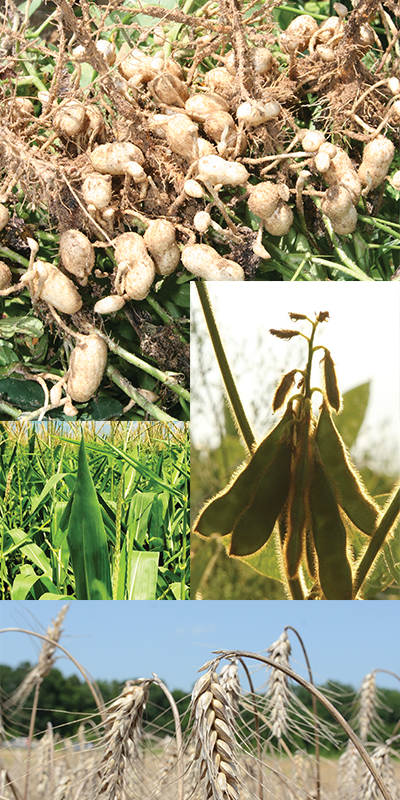Alabama Farmers To Plant Less Cotton, More Peanuts

Alabama farmers expect to plant fewer acres of cotton and corn and devote more land to peanuts and soybeans, according to the U.S. Department of Agriculture’s spring Prospective Plantings Report.
Alabama Farmers Federation Cotton, Soybeans and Wheat and Feed Grains Divisions Director Carla Hornady said most planting decisions are based on commodity prices and production costs.
“For many farmers, it’s a matter of economics,” Hornady said. “Low corn prices make soybeans a more attractive option for some farmers, especially those without irrigation. Soaring production costs and falling prices are causing cotton farmers to look at other crops — like peanuts. We’ve also seen increased interest in minor oilseeds like canola and sesame.”
The report, issued March 31, predicts Alabama’s total cotton acreage will drop 14 percent this year to 300,000 acres, and corn acreage will fall 10 percent to 270,000 acres. Farmers plan to shift some of that acreage to soybeans, which are expected to be up 1 percent to 490,000 acres, and peanuts, up 6 percent to 185,000 acres.
Autauga County farmer Harold Gaines said cotton and peanuts are mainstays for his farm, but for the first time in many years, he planted grain sorghum.
“The environment for row crop farmers right now is that we’re looking for a crop we can pencil a profit on — and it’s a struggle to find that,” Gaines said. “Our crop acreage doesn’t change much, and when it does, it’s based on crop rotation. We aren’t growing soybeans this year. It’s just an economic decision.”
Crop rotation restores depleted minerals and nutrients in the soil and helps control pests and diseases that can become established in the ground. Rotation played a major role in planting decisions for Escambia County’s David Womack.
“All of our irrigated land will be in peanuts just because of our crop rotation,” he said. “We won’t plant corn this year, because we only plant it when we can irrigate it. That means our cotton acreage will actually be up over last year since we don’t have corn. We’ll also have milo (grain sorghum).”
Womack said he’ll plant around 3,600 acres of row crops but wasn’t optimistic about profit potential for the year.
“I think it’s going to be a tough year because of low commodity prices,” he said. “There’s nothing you can pencil a profit on, even expecting good yields.”
Plans by Alabama farmers mirror national trends with cotton acreage predicted to fall 13 percent from 2014, while corn planting is set to decline 2 percent. Soybean acres should increase 1 percent, and peanut acreage is predicted to grow by 9 percent.
If crop reductions materialize, this would be the lowest planted corn acreage in the United States since 2010 and the lowest cotton acreage since 2009.
The report, compiled by USDA’s National Agricultural Statistics Service, predicts Alabama’s wheat acreage will drop 18 percent to 210,000 acres, but oat acreage is expected to be up 20 percent to 60,000 acres. State farmers are expected to devote less land to hay, down 5 percent to 710,000 acres.
For the complete Prospective Plantings Report, visit tinyurl.com/Planting2015.
